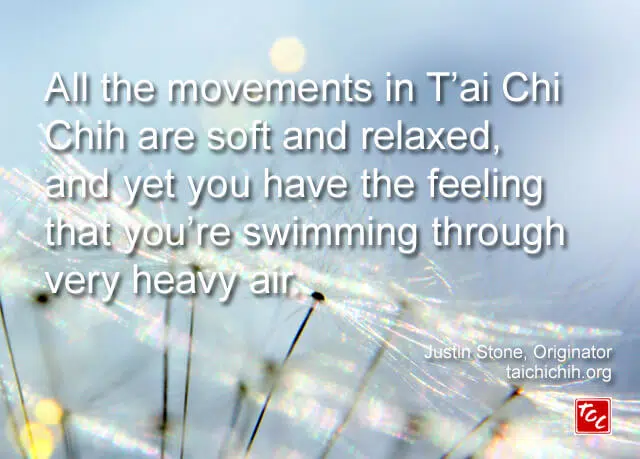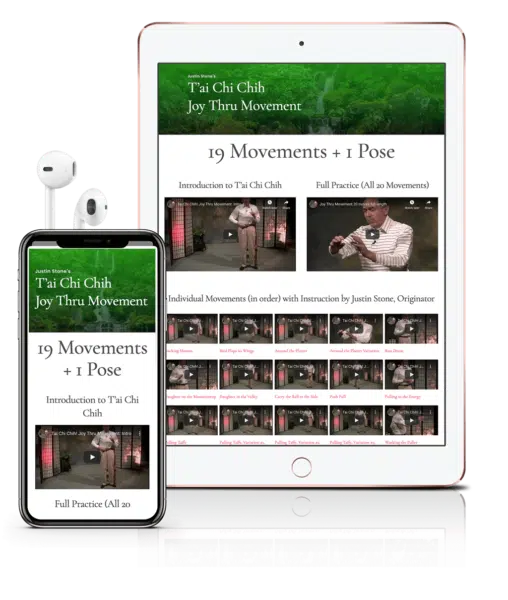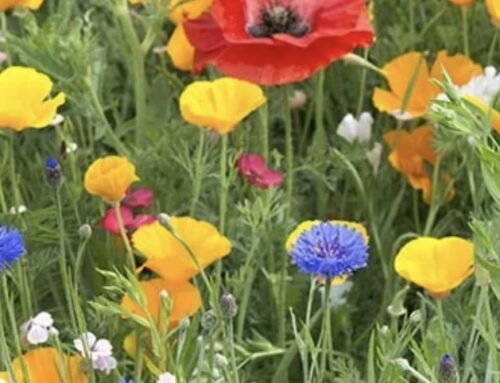Doing Less – Learning about Letting Go
A TCC student explains why sometimes doing “less” is doing “more.”
By L.S., Fort Collins, CO
Reprinted by permission from the May 2016 issue of the TCC journal, The Vital Force.
I’m one of a group of women in Northern Colorado on the path toward T’ai Chi Chih teacher accreditation in June. A few weeks after an intensive with Sandy, I was struggling with the balance between learning what I needed to know for accreditation, and sinking into practice for its own sake. A few of us were speaking with our teacher, Marie, after class.
She explained that as teacher candidates, we are on a different part of the journey than we were as students, because we are learning the movements as prospective teachers. When students first start out, she explained, they are naturally “in their heads” as they learn the movements and understand the principles. With practice, they learn to let go of thinking and doing. Now, as teacher candidates, we have to go back into our heads to understand TCC at a new level.
It is important to practice for ourselves, not always working on something, she explained. Marie encouraged us to focus on the joy of our practice at home, and practice with variety of DVDs to feel how other teachers move.
Privately, she suggested I make my movements smaller, with less effort and ground longer. This echoed a life lesson I’d been forgetting and relearning all year. My health was telling me that I needed to do less, and rest more, but I wasn’t quite ready to listen. Life already seemed to be moving at a faster pace than I could keep up with.
I’ve noticed that my mind has a tendency to judge any terms that it doesn’t understand. Statements like “flow from the center,” “let the tan t’ien lead” and “let go of any effort” felt very “woo-woo” when I first heard them. Sometimes they felt like “shoulds.” My mind began to tune them out, as it tunes out music or someone coughing in the room, while it struggled to get the arms just right, the weight shift perfect. These phrases became jargon, or generalized platitudes. I’ve learned since then (by repetition and seeing their effects) that it’s the exact opposite: these are explicit instructions, keys to the power of TCC. They can have a profound influence not only in my practice, but in my life.
I’ve always found it paradoxical that many TCC movement names involve active verbs, imply effort, or are in the imperative. Push, Pull, Carry, Work. Yet one of our main principles says to let go of effort. When I first started practicing, I didn’t fully believe that TCC could truly be effortless. My mind rationalized. “Of course there should be no strain; perhaps that is what is meant.”
Concepts are so closely interrelated and connected in TCC. It sometimes feels like a tangled thread, which tightens further when I pull on the ends to untangle them. Alignment affects softness, for example, because softness requires release of tension, and that can only happen when I’m balanced over my feet. To flow from the tan t’ien, without using any effort, requires a connection to the feet that disappears the moment I drift into my head. The more I learn, the more there is to learn.
I recently noticed another paradox when I’m working on corrections to my form. For each correction, my mind wants to make an active change, a fix. If my arms are too high or too low, I adjust them into the “proper” spot. If my foot has a tendency to turn out too much, I place it back in the correct alignment when I notice. When my eyes drift into following the movement, I chide them gently and offer them a point to focus on. Inevitably I add on more “doing” or “shoulding” to the movement with the corrections. How can I fix it all, still follow all the principles and still do less?
I started playing with the “why” of the corrections I was working on. Why does my foot end up in the wrong place? Why does it feel like effort to get my arms high enough? An odd pattern appeared in the answers. There was usually an area where I needed to soften, let go of tension, or do less, which then increased the connectedness and “fixed” the problem, or rather, the problem faded away, at least until habit took over. Relaxing hunched shoulders allowed my hands to come into place more effortlessly. Softening a hip placed the foot in alignment. Sinking into the feet brought my gaze inward and steadied it.
I’m slowly learning how to interpret my body’s signals as instructions rather than judgments or problems to fix. I look for solutions that involve letting go, rather than doing more. I’m practicing letting go of thoughts when they are stressful, self-critical, or anxious. I’m not giving time to decisions that don’t matter. If life feels overwhelming, I probably really need rest and a change in perspective. Stressing over something is not the same as doing or planning it.
It’s going to take a lot of practice, and many practices. I will probably always find it difficult to get out of my head. But the journey will be a more joyful one if I see the hurdles not as problems that I should effort to fix, but as opportunities to let go, listen more closely and connect; to allow the Chi to do the work and problems to work themselves out.





